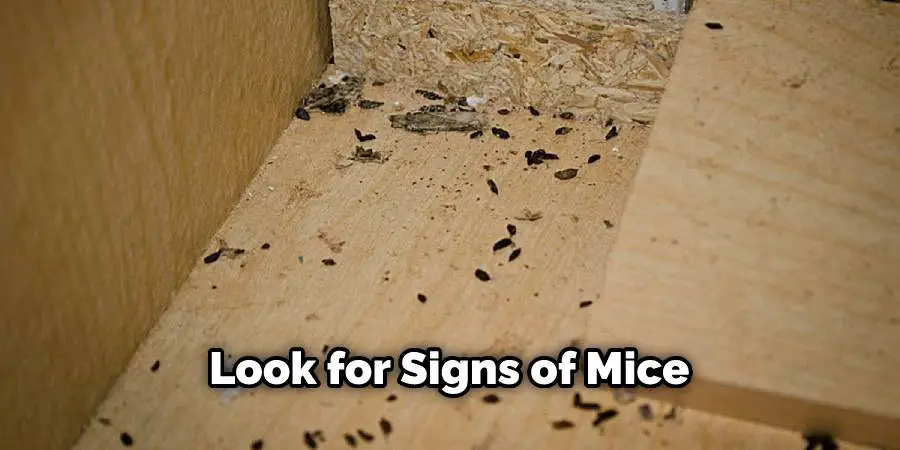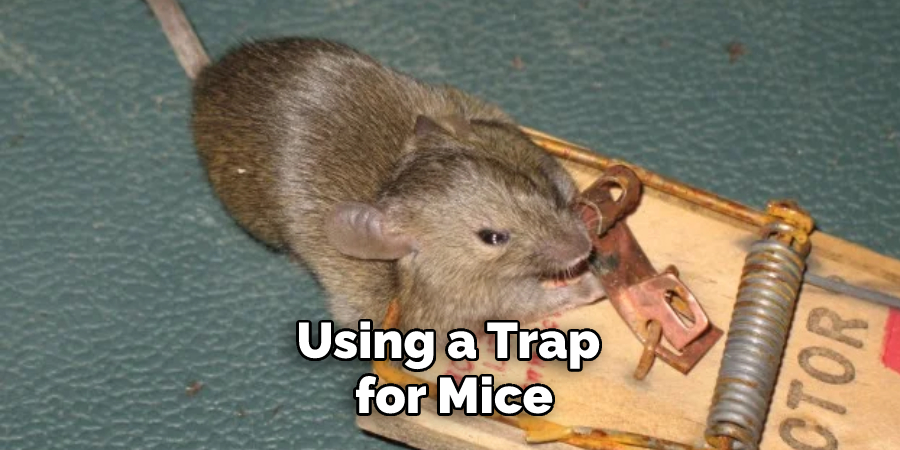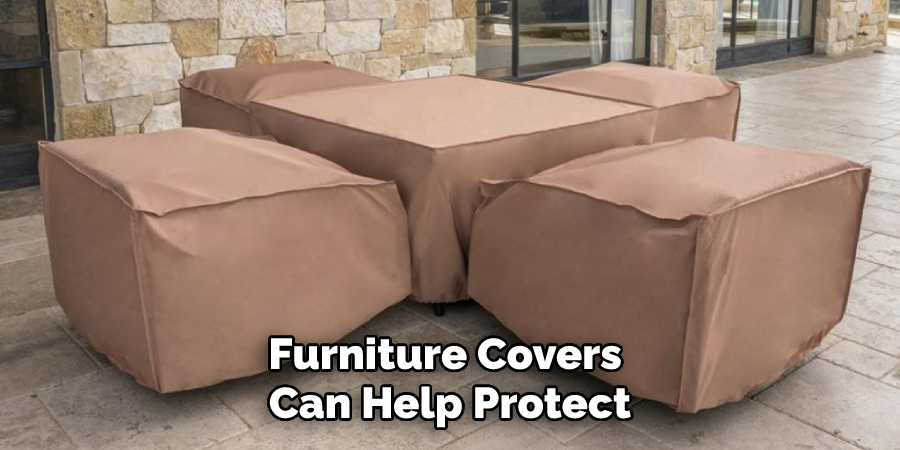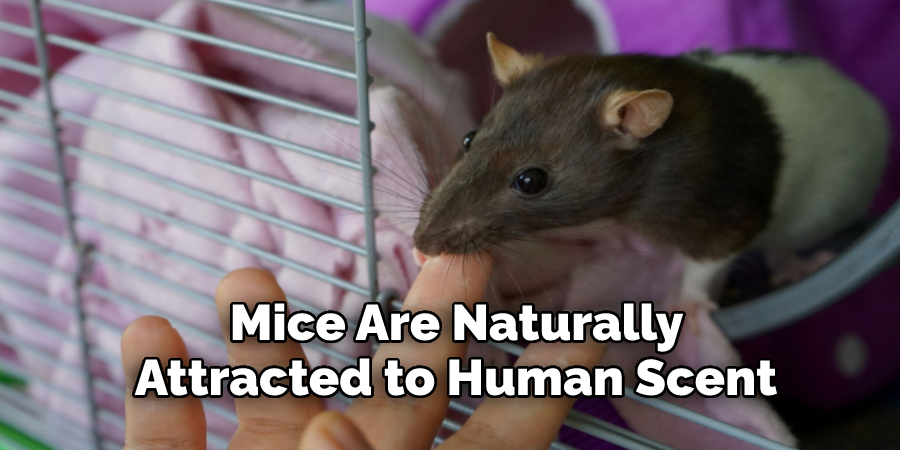Mice are tiny, adorable creatures that can be very cute when playing, but they can also be a huge hassle when they start nesting in your house. So if you’ve been dealing with mice and would like to get them away from your couch, this article is for you! In this article, we’ll provide tips on how to get mice away from my couch using both conventional and natural methods. So read on to learn more!

Couches are one of the most common places that mice like to nest and hide. They’re usually close to the ground, making them easy for mice to access. They’re also often made of soft materials like fabric or cushions, making them even more appealing to mice. So if you have a mouse problem, your couch likely is one of the first places they’ll go.
Why Do Mice Like to Live in Couches?
Mice are attracted to couches for several reasons. First, couches provide ample opportunities for hiding and nesting. The cushions and fabric offer plenty of places to build a nest, and the couch itself provides a dark, safe space for mice to hide from predators.
Couches are often located in areas that offer a good food source, such as a kitchen or dining room. The crumbs and dropped food accumulated around a couch are easy meals for mice.
Finally, couches are typically located in warm, comfortable environments, ideal for mice sensitive to temperature changes. So next time you find a mouse on your couch, remember that it’s there for a good reason!
How Do You Know if You Have Mice on Your Couch?
Mice are small, agile creatures that can squeeze into the tightest spaces. If you think you might have mice on your couch, look for the following signs:
Small droppings: Mice leave behind small, black feces pellets. If you see these on your couch or around your home, it’s a good indicator that mice are present.
Gnaw marks: Mice like to gnaw on things, including furniture, if you see small teeth marks on your couch cushions or woodwork.
Urine stains: Mice also urinate as they move around your home. If you see small yellow or brown stains on your couch, it’s a good sign that mice are using it as their toilet.
If you suspect you have mice on your couch, the best action is to call a professional exterminator. They will be able to correctly identify the problem and get rid of the mice for you.
How to Get Mice Away From My Couch Detailed Guide
Way 1: Use Peppermint Oil
Peppermint oil is a natural rodent repellent that you can use to keep mice away from your couch. This essential oil is derived from the peppermint plant, a water mint, and spearmint hybrid. The strong scent of peppermint oil will deter mice from coming near your couch. Moreover, this oil can also help to mask the smells of food that might attract them to your home in the first place.
What You’ll Need:
- 1/2 cup of water
- 1/2 cup of white vinegar
- 20 drops of peppermint essential oil
- A spray bottle
Step 1:
Before you can get rid of the mice, you need to figure out how many there are. This will help you determine how much peppermint oil you’ll need to use. Next, look for signs of mice, such as droppings, chewed-up food, or footprints.

If you see one mouse, chances are there are more. A female mouse can have up to 10 litters of babies per year, with each litter containing up to six mice. So, if you see one mouse, there could be up to 60 more running around your home.
Step 2:
Mix the water, white vinegar, and peppermint essential oil in a bowl or jar. Pour the mixture into a spray bottle.
Step 3:
Spray the solution around the perimeter of your couch. Be sure to get into all the cracks and crevices, as this is where mice like to hide. You can also spray the solution on any other areas of your home where you’ve seen signs of mice.
Step 4:
Peppermint oil will lose its potency over time, so you’ll need to reapply every few days or weeks. You may also need to increase the amount of oil you’re using if you have a lot of mice.
If you have a mouse problem in your home, you may be wondering how to get rid of them. While there are many methods of getting rid of mice, one of the most effective is to grow peppermint plants. Peppermint has a strong scent that mice do not like and will deter them from entering your home.

To grow peppermint plants, you must purchase seeds or seedlings from a nursery or garden center. Plant the seeds or seedlings in pots filled with rich, well-drained soil. Place the pots in an area that gets full sun and water regularly. When the plants are big enough, transplant them into your garden beds.
Way 2: Use Mothballs as a Repellent
Mothballs are small balls of chemicals that emit a powerful, musty odor. This odor is so strong that it effectively repels moths, mice, and other pests.
Mothballs are an effective way to repel mice. The strong odor of mothballs is unbearable for mice and other small rodents, so they will stay away from areas where mothballs are present. When using mothballs as a repellent, place them in a well-sealed container so that the fumes can’t escape. You can also place mothballs in your drawers and cabinets to keep mice away from your clothes.
Mothballs are poisonous, so keep them away from children and pets. If you have pets, you may want to consider using another type of repellent.
What You’ll Need:
- Mothballs
- Airtight container
Step 1:
Before using mothballs, ensure that the area you’ll be using them in is well ventilated. Mothballs emit poisonous fumes, so it’s essential to ensure that the area is well ventilated to avoid exposure.
Step 2:
Place mothballs in an airtight container. The container will help contain the fumes and prevent them from escaping into the room.

Step 3:
Place the container of mothballs in the area where you want to repel mice. You can also place mothballs in your drawers and cabinets to keep mice away from your clothes.
Step 4:
Check the mothballs regularly and replace them as needed. Mothballs will lose their potency over time, checking them periodically and replacing them. This is a crucial way how to get mice away from my couch.
Way 3: Use Mice Trap
If you have a serious mice problem, you may need to resort to using a trap. There are many different types of traps available on the market, so be sure to do your research to find the one that will work best for your needs. You can purchase traps at most hardware stores or online.

If you decide to go this route, baiting the trap with peanut butter or cheese is usually adequate. Once the mouse is caught, be sure to dispose of it properly so that it does not end up back in your home.
There are also humane traps available if you do not want to kill the mice. These will allow you to catch the mice and release them far away from your home into the wild.
What You’ll Need:
- A trap
- Peanut butter or cheese (for bait)
- Disposable gloves
Step 1:
Put on disposable gloves to avoid mouse droppings on your skin.
Step 2:
Place the trap in an area where you have seen mice activity, such as near a wall or piece of furniture.
Step 3:
Spread a small amount of bait on the trap. Be careful not to use too much, or the mouse may be able to steal the bait without triggering the trap.
Step 4:
Check the trap regularly and remove any dead or captured mice. If using a humane trap, release the mouse into the wild far away from your home. Repeat as necessary until all the mice are gone.
Way 4: Adopt a Cat
If you’re looking for a more long-term solution to your mouse problem, you may want to consider adopting a cat. Cats are natural predators of mice, and they can be very effective at keeping your home mouse-free. Plus, they make great companions!
If you go this route, do your research beforehand and choose a good cat with people and other pets (if you have any). Also, keep in mind that some cats love to play with their prey before killing it, so you may want to look into another option if you’re not comfortable with that.
Prevent Mice From Getting on Your Couch

Mice are lovely creatures, but nobody wants them in their homes. So if you’re dealing with a mouse problem, you probably wonder how to keep them away from your couch. Here are a few tips to prevent mice from getting on your couch:
- Keep your couch clean. Mice are attracted to food and dirt so a clean couch will be less appealing to them.
- Use furniture covers. Furniture covers can help protect your couch from mice by creating a barrier between the fabric and the rodents.
- Get rid of clutter. Mice love to hide in cluttered areas, so getting rid of any excess belongings in your home can help deter them.
- Set up mouse traps. Mousetraps are a great way to catch mice already in your home. Be sure to place them strategically around your couch to get rid of the problem quickly.
Following these tips, you can help prevent mice from getting on your couch and keep your home rodent-free.

Frequently Asked Questions
Will Mice Come Near Me While I Sleep?
No one can definitively say if mice will come near you while you sleep, as such an occurrence is largely anecdotal. That said, there are a few things that you can do to minimize the chances of this happening. First and foremost, make sure that your home is mouse-proof. This means installing tight-fitting doors and windows, avoiding areas where mice could hide (like behind curtains or furniture), and using traps that are specifically designed to catch mice. You can also use a repellent spray or vacuum cleaner with a sticky pad to ward off rodents. If you do find evidence of mice in your home, don’t hesitate to call a professional pest control company for assistance.
Do Mice Climb in Bed With You?
Mice are notorious for their mischief, and this includes climbing in bed with you at night. Unfortunately, mice can also transmit a range of diseases, such as luekemia and salmonella, so it is important to take precautions if you live in close quarters with them.
To prevent mouse infestation, install barriers along your perimeter, including wire mesh or solid wood boards that are 1-1/2 inches high and 18 inches wide. You should also keep food storage areas inaccessible to the rodents by storing all food in sealed containers or traps. Make sure to clean up any crumbs or droppings that accumulate on counters, floors, furniture legs, etc., because they serve as an excellent breeding ground for mice. And finally, be vigilant when watching television or reading during the late evening hours because these activities almost always lead to mouse intrusion into homes.
How Many Mice Are There if I See One?
While there are many different types of mice, the common house mouse is the most popular and can be found almost everywhere. These furry little creatures typically weigh between 2 and 4 ounces, have a lifespan of about two years, and breed rapidly. They’re not known for being destructive or dangerous, but they do like to chew on things so it’s important to keep your home clean!
Should I Sleep in a Room With a Mouse?
While there is no scientific evidence to support the claim that sleeping with a mouse increases your chance of winning the lottery, some people nevertheless swear by this practice. The theory goes like this: mice are naturally attracted to human scent, and as a result, they may move around more during sleep because they’re searching for food or shelter. This increased movement might cause you to make more noise than usual which could lead them into trouble – such as getting lost in an electrical socket – and leave you vulnerable to potential damage or theft.

Of course, there’s no way of knowing if this hypothesis is true or not, so it’s best to avoid sleeping with any animals altogether unless you know exactly how they will be living conditions will be (e.g., in an enclosed space). If all else fails and you still can’t get along without your furry friend by your side at night, at least use artificial scents instead of actual rodents!
Conclusion
If you are like me and hate the thought of having mice in your house, there are some things you can do to help get rid of them. First, ensure that all of your food is stored in sealed containers. Second, try using a humane trap to catch the mice. Finally, if all else fails, call a professional exterminator to care for the problem for you. We hope you find this article on how to get mice away from my couch helpful.
You may also read – How to protect furniture in storage from mice.

